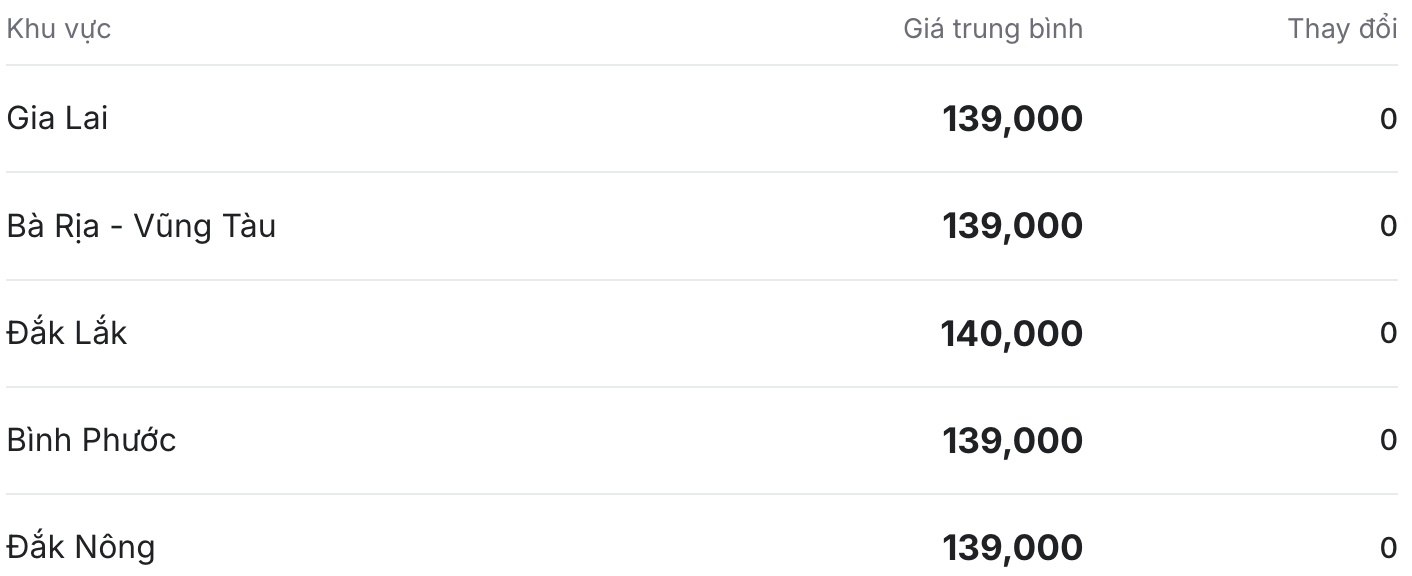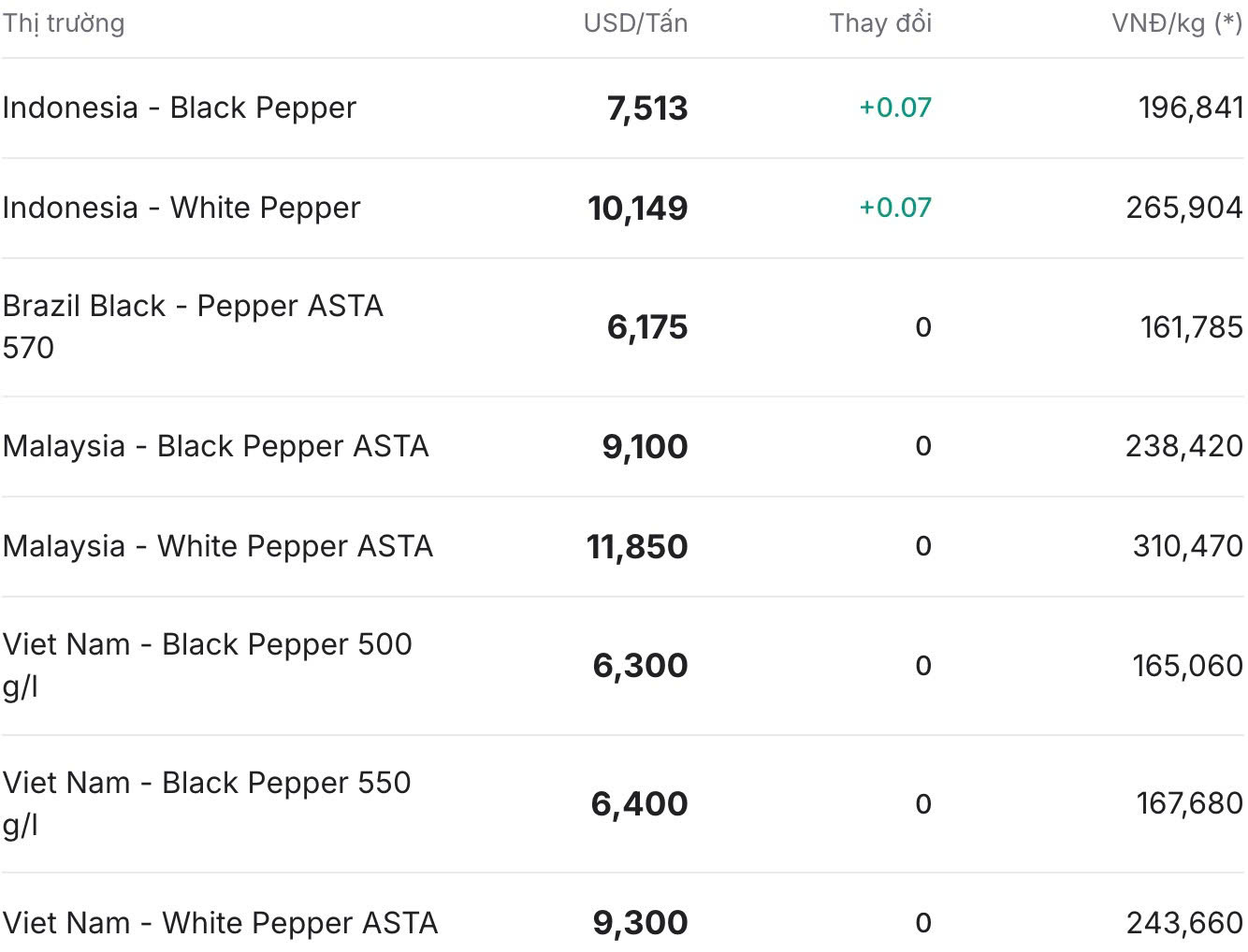Domestic pepper prices: flat trend
As of 11:30 today (September 12), the domestic pepper market has been unchanged after a series of fluctuations. Currently, the pepper purchase price is recorded at 139,000 - 140,000 VND/kg.
The provinces and cities in key regions are mostly at 139,000 VND/kg, except for Dak Lak province.

World pepper prices: Indonesia continues to increase
In the world market, pepper prices are mostly stable. However, the Indonesian exchange - one of the most vibrant markets continued to increase. Currently, these two items are listed at 7,513 USD/ton; increased by 0.07% (equivalent to 196,841 VND/kg); stable white pepper, listed at 10,149 USD/ton (about 265,904 VND/kg).
In Vietnam, the export price of black pepper of 500 g/l and 550 g/l ranges from 6,300 - 6,400 USD/ton. ASTA white pepper prices reached 9,300 USD/ton (equivalent to 243,660 VND/kg).
After a slight increase on the Brazilian exchange, pepper prices in this region are currently at 6,175 USD/ton. Meanwhile, the Malaysian market continues to move sideways. Malaysia's white rice continues to hold the highest price globally at 11,850 USD/ton (equivalent to 310,470 VND/kg).

Assessment and forecast
The reason for the sharp decline in consumer prices in recent days is that domestic consumption demand has not changed much, while exports to major markets are still facing difficulties due to high inventory and weak purchasing power. In particular, prices are currently unstable due to trade tensions in some markets combined with transportation fares increasing by 125%.
In addition, exchange rate developments and policies to tighten agricultural product imports, including pepper in some key importing countries, have also been slowed down, directly affecting domestic purchasing prices.
It is forecasted that in the short term, pepper prices may continue to be under downward pressure. However, in the medium term, the market may recover slightly by the end of the third quarter of 2025 when global inventories begin to run out and import demand increases to serve the year-end holiday season.











